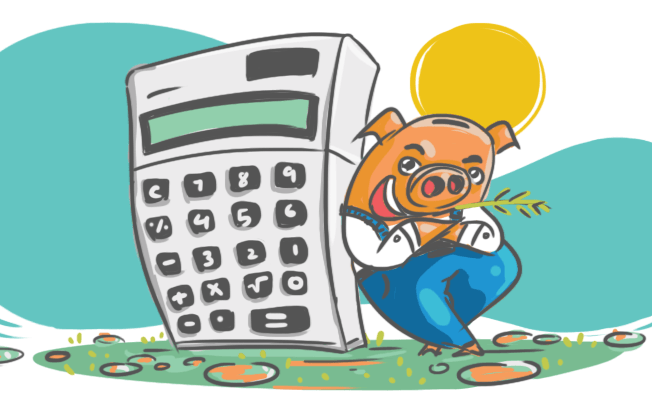Stumped by the interest calculations on your Fixed Deposits? Here’s your guide to understanding how the interest is calculated.
If you’ve always wondered how the interest calculations on your Fixed Deposits are done, then this guide will help you make sense of all those pesky numbers. We’ll also show you how to use a Fixed Deposit calculator.
As you might know, Fixed Deposits are safe investment options for all those who are risk-averse and not too adventurous with their financial investments. A Fixed Deposit is a popular investment option if you are looking for a financial product that safeguards your capital and provides good returns as well.
Additional Reading: Bank Fixed Deposit Rates
Let’s talk returns
If you are investing in Fixed Deposits, you must remember that the returns will not be exponential. A Fixed Deposit gives you lower returns than, for instance, investments in ELSS Mutual Funds. On the bright side though, Fixed Deposits (FDs) are one of the safest investment options around even though the taxes can be a bit on the higher side.
What is the present interest rate on Fixed Deposits?
At present, the interest rate offered on bank Fixed Deposits is between 5% – 7.5% for regular depositors and an additional 0.5% for senior citizens. Note that company deposits might provide higher returns than bank deposits.
Some banks may offer special interest rates on Fixed Deposits. These are usually for unusual tenures such as 555, 1001 days etc. It always helps to look around for the best rates offered.
Wondering how the interest on your FD is calculated? Let’s begin with a little lesson on simple and compound interest.
Simple Interest Simplified
Simple interest is calculated on the initial Fixed Deposit amount only. How is simple interest calculated?
Let’s give you an example.
FD amount: Rs. 1,00,000
FD tenure: 3 years
Interest rate: 10% p.a.
The math is very simple
Year 1: Rs. 1,00,000 x 10% = Rs. 10,000
Year 2: Same thing…Rs. 1,00,000 x 10% = Rs. 10,000
Year 3: Yes, again! Rs. 1,00,000 x 10% = Rs. 10,000
Total interest earned in 3 years: Rs. 30,000
Ta da! Maturity amount: Rs. 1,00,000 + Rs. 30,000 = Rs. 1,30,000
Decoding Compound Interest
Compound interest is much like interest on interest. Interest is calculated on the principal and the interest earned on the principal.
Getting down to the numbers
Year 1: Rs. 1,00,000 x 10% = Rs. 10,000 (Principal + Interest = Rs.1,10,000)
Year 2: Rs. 1,10,000 x 10% = Rs. 11,000 (Principal + Interest = Rs.1,11,000)
Year 3: Rs. 1,11,000 x 10% = Rs. 11,100.
Total interest earned in 3 years: Rs. 32,100.
Maturity value on payout after 3 years: Rs. 1,32,100, which is higher than what you would have got if it was simple interest.
You must understand that this concept is explained in a simple manner here, but is much more complicated when you include how often the interest is going to compound (that is, how often is interest on interest going to be calculated). Compounding of interest can happen annually, semi-annually, quarterly or monthly. Banks usually calculate interest on a quarterly basis.
Now, let’s tell you how to use a Fixed Deposit calculator
Do calculations make you cranky? Don’t fret! You can calculate your Fixed Deposit returns with an FD Calculator. There are only three simple steps.
- Enter the deposit amount into the calculator
- The tenure of your deposit
- Enter the interest rate the bank is offering
Hit calculate and find out your maturity amount in seconds. It’s that simple!
Why Use A Fixed Deposit calculator?
It’s almost effortless. With an FD calculator, you can save time and since it’s really simple, you don’t need to break into a sweat.
Additional Reading: Should You Break That Fixed Deposit?
Want to try your hand at the calculator? You know you want to!
